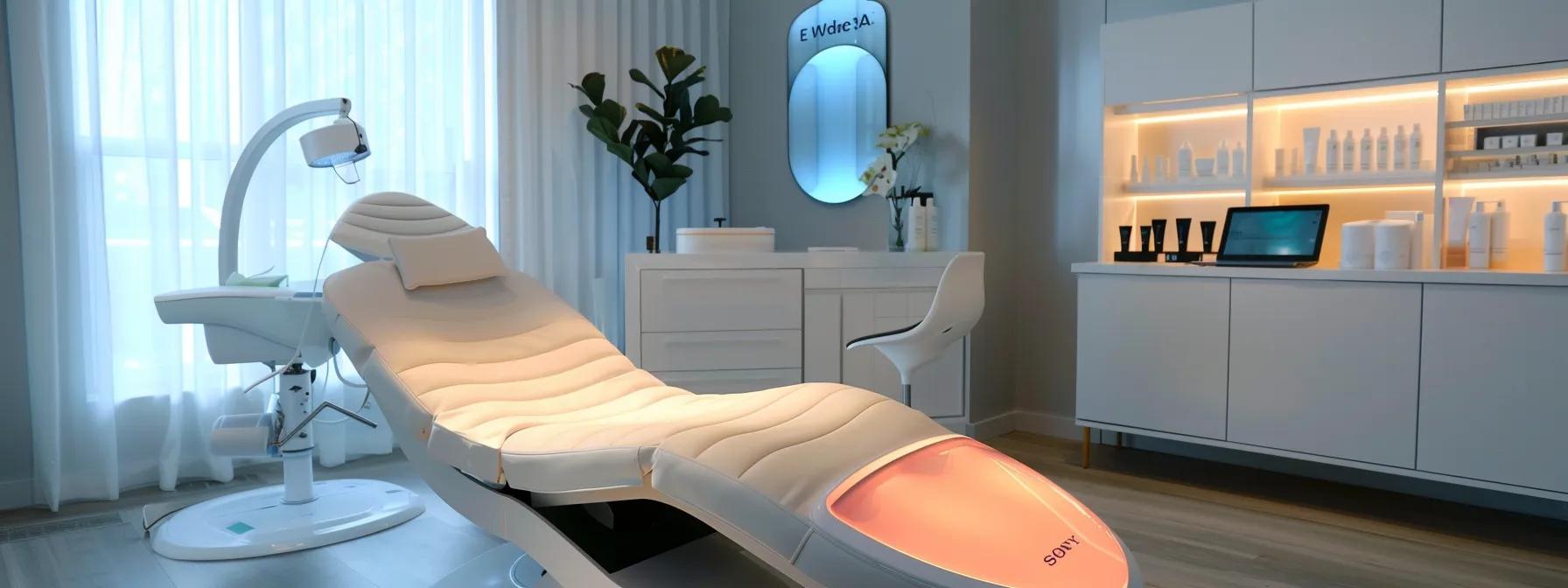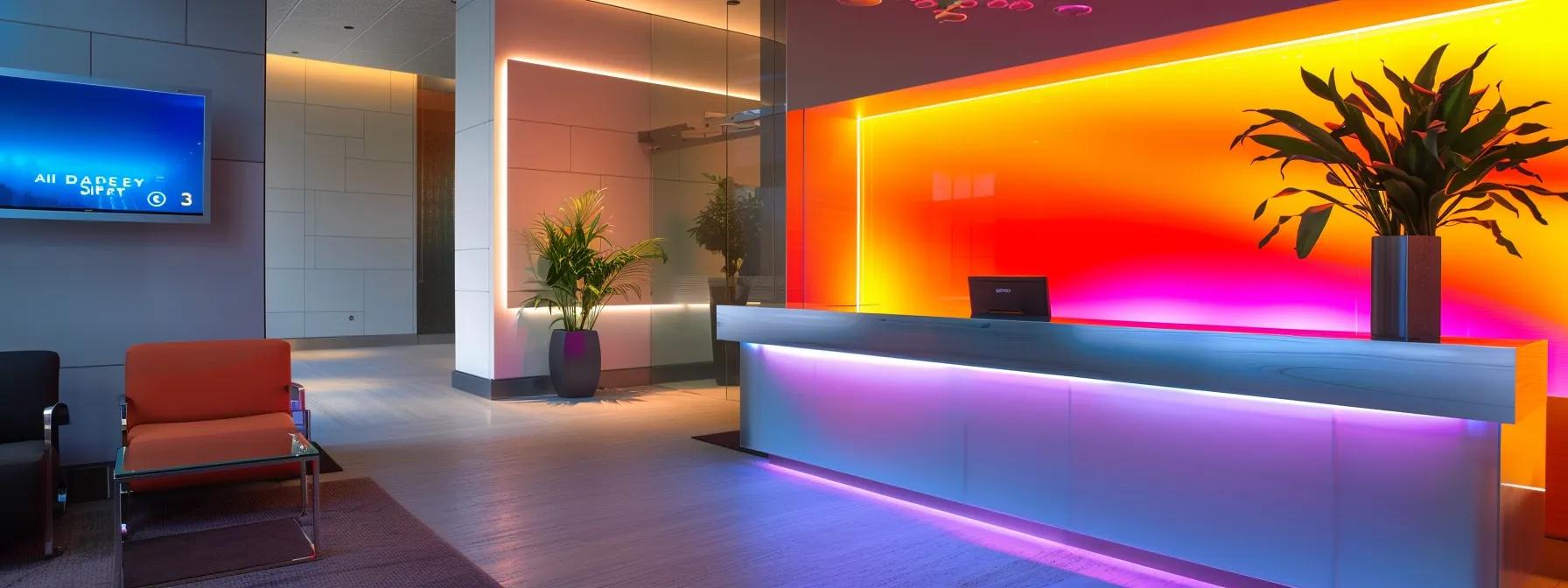
Table Of Contents:
- Cost Benefits of LED Therapy for Skin Health
- Understanding the Initial Investment for LED Therapy Devices
- Calculating Long-Term Savings With LED Therapy for Skin
- Cost Efficiency of at-Home LED Therapy Compared to Clinical Visits
- Economic Advantages of LED Therapy for Specific Skin Conditions
- Indirect Cost Benefits Associated With Improved Skin Health From LED Therapy
- Making an Economically Sound Choice for Your LED Therapy Needs
- Final Thoughts
- Frequently Asked Questions
Cost Benefits of LED Therapy for Skin Health
LED therapy is an affordable, innovative, and clinically proven method to improve skin health through non-invasive treatments. With at-home LED devices, individuals can now experience salon-quality skincare without the need for frequent clinic visits. This article examines the cost benefits of LED therapy by exploring initial investment considerations, long-term savings, and economic advantages compared to traditional clinical skincare regimens. Readers will understand how LED masks, wands, and panels can reduce expenses on professional treatments, topical creams, and makeup while also offering added benefits like improved self-confidence and simplified routines.
In the following sections, we break down each financial aspect of LED therapy using clear analysis and real-world examples to highlight its long-term economic and skin health advantages.
Understanding the Initial Investment for LED Therapy Devices
Comparing Upfront Costs of at-Home LED Masks, Wands, and Panels
The cost of LED therapy devices varies by type. At-home LED masks generally range from $150 to $400 and offer full facial coverage with features like built-in timers and adjustable wavelengths. LED wands, targeting specific areas such as acne or wrinkles, cost between $100 and $250. Professional-grade LED panels provide extensive coverage and range from $500 to $1500, often featuring multi-wavelength use and superior durability.
Key factors include usage frequency, device longevity, rechargeable battery operation, safety certifications, and warranty support backed by clinical trials. For example, a mid-priced LED mask may balance cost and performance, making it an attractive option for those seeking to manage acne, hyperpigmentation, and other skin concerns.
Professional LED Therapy Session Pricing and Package Deals
Professional LED therapy sessions in clinics typically cost between $50 and $150 per session. Many clinics offer package deals that reduce the per-session cost by up to 20% when multiple sessions are purchased. However, the high operational costs at clinics—covering technician expertise, facility upkeep, and overhead—mean that the total expense over time can far exceed the one-time cost of an at-home LED system. Studies show that regular LED therapy improves skin texture and minimizes visible signs of aging, reinforcing the economic benefits of owning a home device over recurring high-cost sessions.
Factors Influencing the Price of LED Therapy Equipment
The price of LED therapy devices is influenced by several factors. Products with dual extracts, adjustable intensity controls, and multiple wavelength options typically carry a higher price tag. Additional elements such as brand reputation, product certification, and supporting evidence also play a role. For instance, scandinavian biohacker devices are known for rigorous testing and demonstrated efficacy in randomized controlled trials. As technology advances and competition increases, prices tend to decrease, providing consumers with better value.
Assessing the Value Proposition of Different LED Device Tiers
Evaluating LED devices involves looking past the initial cost to determine long-term benefits. Premium devices often offer advanced features like customizable session lengths, multiple treatment modes, and app-based usage tracking, while mid-range models focus on essential functions that are user-friendly for beginners. Factors such as durability, ease of use, customer support, and reduced needs for other skincare products should be considered. Ultimately, even with a higher upfront cost, a premium device may result in significant savings over time by cutting down on expensive creams, professional treatments, and corrective procedures.
Long-Term Financial Planning for LED Therapy Use
Long-term planning is essential when investing in LED therapy. Consumers should consider device lifespan, maintenance costs, and the possibility of technological upgrades. LED masks and panels can serve as a long-term alternative to repeated clinic visits, typically lasting 5 to 10 years. Planned updates and improved technology may further lower annual costs. Moreover, the non-invasive nature of LED treatments helps prevent the need for costly invasive procedures later. Utilizing cost-per-use calculators and ROI analyses can help compare the long-term benefits of an at-home LED device against ongoing clinic treatments.
Calculating Long-Term Savings With LED Therapy for Skin

Reduced Spending on Professional Skincare Treatments Over Time
LED therapy can lead to significant long-term savings by decreasing the frequency of professional skincare appointments. Regular clinic visits for facials, laser treatments, or anti-aging procedures can be expensive, whereas an LED device offers similar benefits without high recurring fees. Studies indicate that by substituting clinical sessions with at-home treatments, users can save hundreds of dollars annually. These savings become especially meaningful for individuals managing chronic conditions like acne or hyperpigmentation, as the initial investment is gradually offset by annual savings.
Diminished Need for Costly Topical Creams and Serums
Another major saving comes from reduced reliance on expensive topical products. LED therapy stimulates cellular repair and collagen production, which can reduce wrinkles, improve skin tone, and enhance hydration. As a result, users may find they need fewer creams, serums, and moisturizers. Some studies suggest that skincare expenditures can drop by around 30% with regular LED therapy, lessening the need to purchase multiple specialized products.
Fewer Purchases of Consumable Acne or Anti-Aging Products
LED therapy offers an economical benefit by decreasing the need for consumable skincare products. Instead of continuously repurchasing a variety of creams and serums for acne or aging, a one-time LED device provides ongoing treatment benefits. This reduction in repetitive purchases not only translates to cost savings but also simplifies the skincare routine, allowing users to manage acne, wrinkles, and inflammation more efficiently.
The Economic Advantage of Preventing Future Skin Issues
Preventive treatment is a key aspect of LED therapy. Regular sessions can slow the progression of skin conditions such as premature aging, hyperpigmentation, and fine lines. Early intervention with LED therapy may delay or reduce the need for more invasive and expensive procedures like laser resurfacing or injectable fillers. This proactive approach not only saves direct costs but can also reduce broader societal healthcare expenses related to chronic skin conditions.
Comparing Lifetime Costs: LED Therapy Versus Traditional Skincare Regimens
A lifetime cost analysis shows that while traditional regimens accumulate expenses from various products and periodic treatments, LED therapy requires a single initial investment with minimal maintenance. For instance, spending $200 per year on topical treatments and clinical services over 20 years could total around $4,000, whereas an LED device costing $400 can provide similar benefits over the same period. This example demonstrates why LED therapy is a highly cost-effective long-term investment.
Cost Efficiency of at-Home LED Therapy Compared to Clinical Visits
Breaking Down Per-Session Costs of Home Devices
At-home LED devices are extremely cost-efficient when considered on a per-session basis. While professional sessions may cost $50 to $150, the expense of an LED mask or panel is spread out over many treatments. For instance, a $300 LED mask used twice weekly over 10 years results in a very low cost per session. This allows for frequent, consistent treatments without a significant financial burden.
Eliminating Travel and Appointment-Related Expenses
Using an LED device at home eliminates many indirect costs associated with clinic visits. Expenses such as transportation, parking, and lost work time add up over multiple appointments. Avoiding these costs further enhances the overall cost effectiveness of at-home LED therapy, making it not only healthier but also more convenient and economical.
The Financial Benefit of Treatment Consistency Without Clinic Fees
Consistency in treatment is crucial for improving skin health. At-home LED devices enable daily use without the recurring fees of professional sessions. This consistency leads to better long-term results by reducing inflammation, stimulating collagen production, and improving skin tone—all while saving money by avoiding repeated appointment fees.
Evaluating the Return on Investment for Personal LED Devices
When comparing the upfront cost of an LED device to the cumulative expense of professional treatments and skincare products, the return on investment (ROI) is notably high. Over a 10-year period, an LED device’s per-treatment cost is a fraction of that incurred in a clinical setting. Furthermore, the benefits of improved skin health can lead to enhanced self-esteem and a reduced need for additional treatments, making the investment both financially and psychologically rewarding.
When Professional Sessions Offer Better Cost Benefits
There are cases when professional LED therapy sessions may be more advantageous. For severe skin conditions or when a highly targeted treatment is necessary, professional equipment with higher power outputs and tailored settings can deliver results more quickly. In such situations, the higher clinical cost may be justified, especially if supported by expert guidance and comprehensive aftercare.
Economic Advantages of LED Therapy for Specific Skin Conditions

Cost-Effective Acne Management With Blue and Red Light Therapy
LED therapy has proven effective for acne management. Blue light targets acne-causing bacteria, while red light reduces inflammation and promotes healing. Clinical studies have found that regular treatments can reduce acne lesions considerably. For those suffering from acne, this technology offers an alternative to costly over-the-counter medications, prescriptions, and repeated dermatologist visits. By addressing the root causes of acne, LED therapy serves as a cost-effective long-term solution.
Affordable Wrinkle Reduction and Anti-Aging With Red Light Therapy
Red light therapy is widely appreciated for its wrinkle-reducing and anti-aging effects. Clinical trials demonstrate that it increases collagen production and improves skin elasticity, resulting in smoother skin with fewer fine lines. This non-invasive treatment eliminates the need for costly cosmetic procedures such as Botox or laser resurfacing. Users notice consistent results that lower the need for expensive anti-aging products and clinical interventions.
Financial Relief From Reduced Inflammation and Redness
LED therapy can significantly ease the financial burden on individuals with chronic skin conditions like rosacea or eczema. By modulating cellular activity and reducing inflammation, LED treatment improves skin barrier function. This reduces the need for costly prescription creams and anti-inflammatory medications, along with fewer clinic visits during flare-ups, contributing to long-term saving.
Savings on Treatments for Hyperpigmentation and Sun Damage
Conditions such as hyperpigmentation and sun damage typically require multiple, costly treatments like chemical peels and laser therapy. LED therapy offers a non-invasive alternative that stimulates cellular repair and evens out skin tone. Regular use may help reduce the appearance of dark spots and postpone more expensive procedures, resulting in compounded savings over time.
Budget-Friendly Support for Overall Skin Rejuvenation
Overall skin rejuvenation can be achieved on a budget with LED therapy. Instead of buying separate products for wrinkles, acne, and hyperpigmentation, a single LED device can address multiple concerns. This multifunctional approach simplifies routines, reduces cumulative costs, and is often backed by clinical evidence, making it a smart long-term investment.
Indirect Cost Benefits Associated With Improved Skin Health From LED Therapy
Potential Reduction in Makeup and Concealer Purchases
As LED therapy improves skin tone and reduces blemishes, many users find they no longer need heavy makeup or concealers to mask imperfections. This reduction in cosmetic use can lead to substantial cost savings over time and simplifies daily routines, allowing consumers to invest in higher-impact products elsewhere.
Time Savings From Simplified Skincare Routines
Improved skin health often results in a simplified skincare regimen. With fewer breakouts and reduced inflammation, individuals can cut down the number of products they use and the time spent on their routine. These time savings are valuable, especially for busy individuals, and indirectly reduce spending on additional treatments and products.
Increased Confidence and Its Positive Financial Implications
Enhanced skin health can boost self-confidence, which may translate into better professional and social opportunities. Better self-esteem can lead to improved job performance and networking, indirectly contributing to financial gains. Additionally, a positive self-image can reduce the need for further cosmetic interventions, saving money in the long run.
The Value of Non-Invasive Treatment and No Downtime
LED therapy’s non-invasive nature means no downtime and no hidden costs such as lost work days or recovery care expenses. Treatments are simple, pain-free, and do not require additional recovery products, making them particularly appealing for professionals and busy individuals who cannot afford prolonged recovery periods.
Cost Savings From Enhanced Absorption of Other Skincare Products
By improving skin permeability and overall condition, LED therapy enhances the absorption and effectiveness of other skincare products like moisturizers, serums, and corrective creams. This means a smaller quantity of these often expensive products is needed to achieve desired results, resulting in further long-term savings.
Making an Economically Sound Choice for Your LED Therapy Needs

Identifying Features That Offer the Best Cost-Benefit Ratio
When choosing an LED device, it is critical to focus on features that maximize value. Consumers should look at specifications such as light wavelength options, session timers, rechargeable battery efficiency, and build durability. Devices with multi-wavelength functionality tend to be more versatile and effective in addressing issues from acne to anti-aging.
Reading Reviews to Assess Long-Term Value and Durability
User reviews and expert testimonials provide vital insights into a device’s long-term performance. Detailed feedback about product longevity, charging performance, and overall efficacy can help prospective buyers make informed decisions. Reviews that include before-and-after photos and objective measurements are particularly helpful.
Understanding Warranty and Maintenance Costs for LED Devices
A strong warranty and low maintenance requirements add significant value. Devices with warranties ranging from one to three years, supplemented by accessible customer service, offer better long-term protection against additional expenses. Analyzing warranty terms and maintenance needs is essential when calculating the overall lifetime cost.
Balancing Device Capabilities With Your Skincare Budget
Consumers must balance the advanced features of premium devices with their budget constraints. While high-end models may include adjustable intensities and multiple treatment modes, mid-range devices can offer solid performance at a more affordable price. A careful cost-benefit analysis considering upfront cost, expected lifespan, and replacement frequency ensures that the device meets both skincare and budgetary requirements.
Recognizing Misleading Claims for Overpriced LED Therapy Options
In a competitive market, some manufacturers may exaggerate benefits to justify higher prices. It is important to critically assess product claims by consulting clinical studies, third-party validations, and user reviews. Certifications such as FDA clearance or CE marking can indicate credible performance, helping buyers avoid overpaying for devices that do not deliver proportional benefits.
Final Thoughts
LED therapy offers a compelling financial and clinical advantage over traditional skincare regimens. It combines significant cost savings with long-term skin health benefits, reducing the reliance on expensive professional treatments and multiple skincare products. By choosing a device that fits both one’s budget and skin concerns, individuals can enjoy effective, simplified skin rejuvenation. Ultimately, LED therapy is a smart and economical investment in overall skin health and quality of life.
Frequently Asked Questions
Q: How does LED therapy reduce overall skincare expenses? A: LED therapy reduces the need for recurring professional treatments and expensive skincare products. Over time, improvements in skin health help users avoid frequent clinic visits and redundant cosmetic purchases, leading to substantial savings.
Q: Are at-home LED devices effective compared to professional sessions? A: Yes, at-home LED devices effectively improve skin tone, reduce inflammation, and stimulate collagen production. While professional sessions offer targeted treatments, regular use of quality at-home devices yields similar benefits at a much lower per-session cost.
Q: What factors should be considered when purchasing an LED therapy device for skin health? A: Consumers should review device features such as light wavelengths, session duration, rechargeable battery life, warranty, and user reviews. Balancing price and functionality while checking clinical evidence of efficacy helps ensure the best choice for individual skin needs.
Q: Can LED therapy help manage chronic skin conditions cost-effectively? A: Yes, LED therapy is particularly effective for chronic conditions like acne, hyperpigmentation, and inflammation. Its preventive and therapeutic effects can lower the need for costly treatments and medications over time.
Q: How do the savings from LED therapy compare to traditional skincare regimens over a lifetime? A: Lifetime analyses show that traditional regimens accumulate high expenses for products and treatments, while LED therapy requires a one-time investment with minimal ongoing costs. Over 10 to 20 years, the savings from reduced product usage and fewer clinical procedures can be substantial.
Q: What precautions should consumers take to avoid misleading claims from LED device manufacturers? A: Consumers should critically evaluate product reviews, check for clinical evidence of efficacy, and verify certifications like FDA or CE marks. Comparing multiple products based on detailed specifications and warranty terms helps ensure that the chosen device delivers genuine skin benefits without inflated pricing.


Leave a comment
This site is protected by hCaptcha and the hCaptcha Privacy Policy and Terms of Service apply.